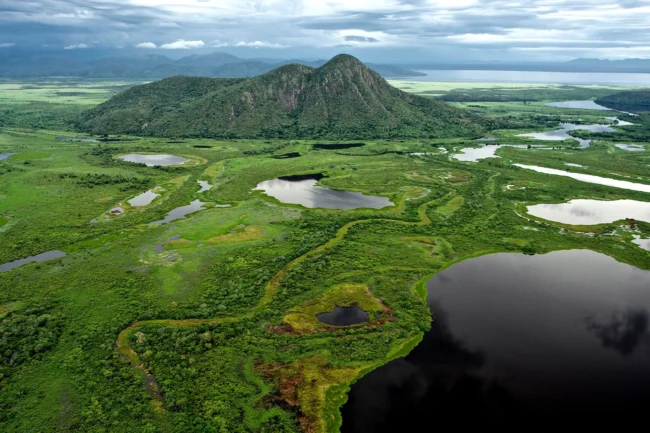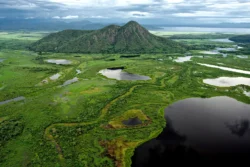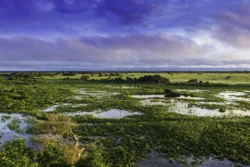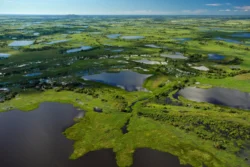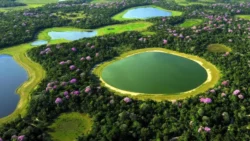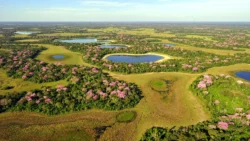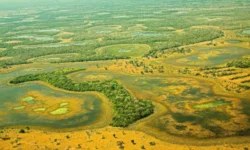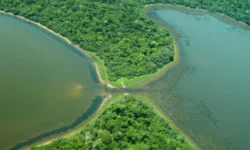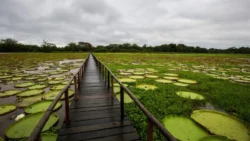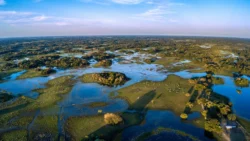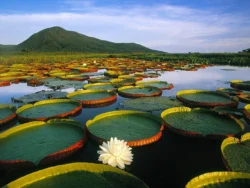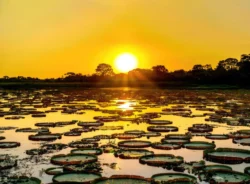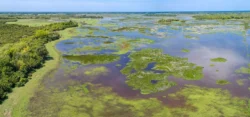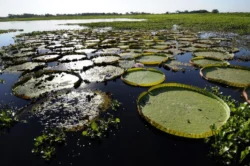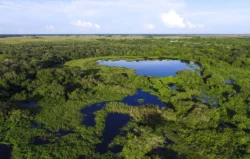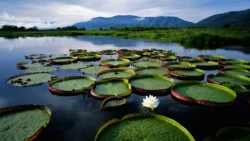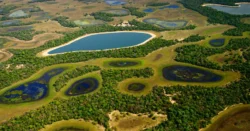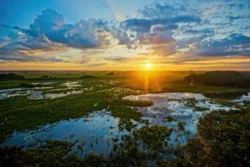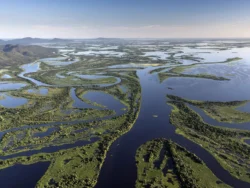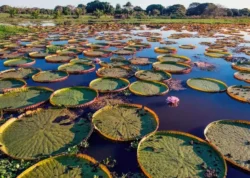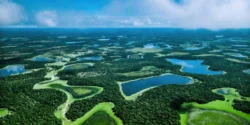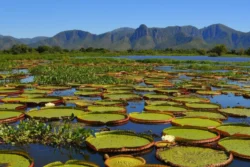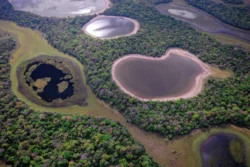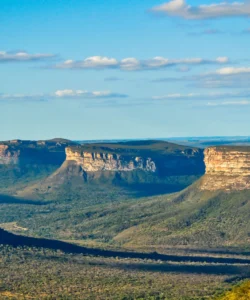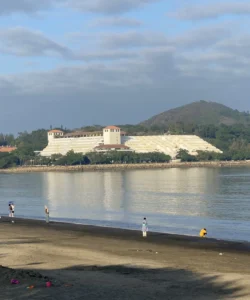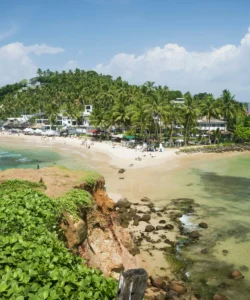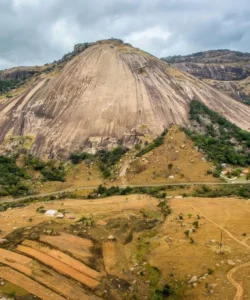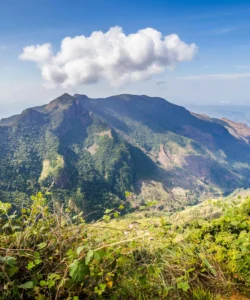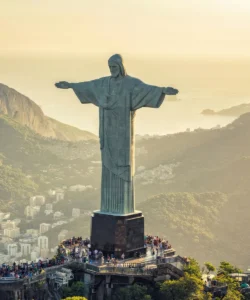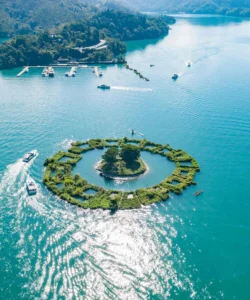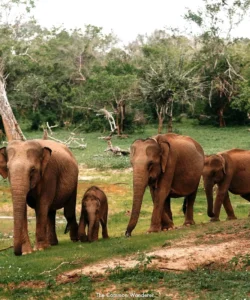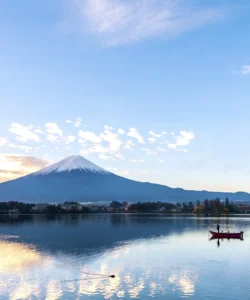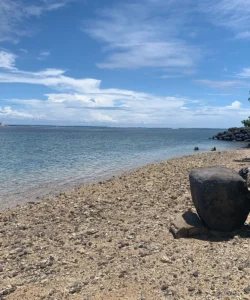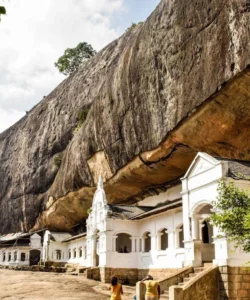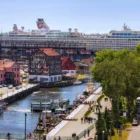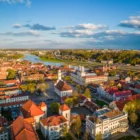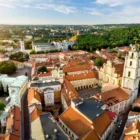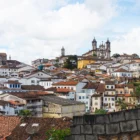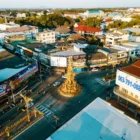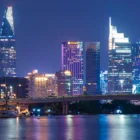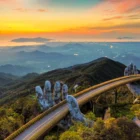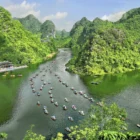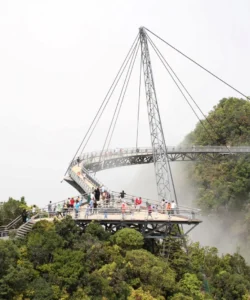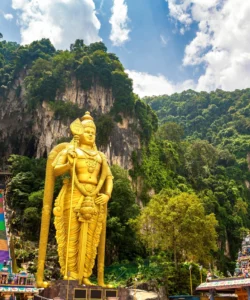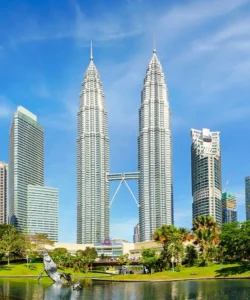The Pantanal is the world’s largest tropical wetland area, a vast, seasonally flooded plain primarily located in Brazil, but also extending into Bolivia and Paraguay. Often described as a “huge soup plate” that fills and empties with the seasons, this immense and remarkably well-preserved ecosystem is a mosaic of flooded grasslands, savannas, and tropical forests. While less famous than its northern neighbor, the Amazon, the Pantanal is globally renowned as South America’s premier wildlife spotting destination due to its open landscapes, making animals more visible. It is a UNESCO World Heritage site and a Biosphere Reserve, celebrated for its astonishing concentration of biodiversity.
Name: Pantanal (Portuguese: [pɐ̃taˈnaw], from pântano, meaning “wetland, bog, swamp or marsh”)
Location and Size:
The Pantanal covers an area of approximately 140,000–195,000 square kilometers (54,000–75,000 sq mi), making it roughly 10 times the size of Florida’s Everglades. About 80% of its area is within the Brazilian states of Mato Grosso and Mato Grosso do Sul, with smaller portions in eastern Bolivia and eastern Paraguay.
How to get there:
Reaching the Pantanal, involves a very long international journey to South America, followed by domestic travel within Brazil (most common):
- From Brazil’s Major Cities to the Pantanal: The two main gateway cities for the Brazilian Pantanal are:
- Cuiabá (CGB), Mato Grosso (Northern Pantanal): For exploring the northern Pantanal, particularly the famous Transpantaneira Highway and areas known for jaguar sightings.
- Campo Grande (CGR), Mato Grosso do Sul (Southern Pantanal): For exploring the southern Pantanal, known for diverse wildlife, birdwatching, and a mix of fazendas (ranches) and lodges.
- Fly from São Paulo or Rio de Janeiro to Cuiabá or Campo Grande: Domestic flights are frequent and take approximately 2-3 hours.
- From Gateway City to the Pantanal Lodges/Areas:
- Organized Tours (Recommended): Most visitors book all-inclusive packages with lodges or tour operators that arrange transfers from Cuiabá or Campo Grande to their specific Pantanal lodge. These often involve 4×4 vehicles, sometimes boat transfers.
- Bus/Shared Van: Some routes are accessible by public bus to larger Pantanal towns, but reaching specific lodges often requires pre-arranged pickups.
- Self-Drive (Not recommended for first-timers): While possible, roads can be unpaved, challenging, and difficult to navigate without local knowledge, especially in the wet season.
Best Time to Visit:
The Pantanal’s unique characteristics are defined by its seasonal flooding cycle. The dry season (from June through October) is generally considered the best time for wildlife viewing:
- Wildlife Concentration: As water levels recede, animals tend to cluster around the remaining shrinking oxbow lakes, rivers, and permanent watering holes, making them easier to spot.
- Easier Access: Roads and trails (like the Transpantaneira) become more accessible, allowing for better game drives and wider exploration.
- Jaguar Spotting: This period, especially July to October, is considered the best for spotting elusive jaguars along riverbanks in the northern Pantanal (Porto Jofre area).
- Temperatures: Daytime temperatures can be hot (around 30-35°C / 90-95°F), but mornings and evenings can be quite cool, especially in June, July, and August (down to 5°C / 40°F).
The wet season (November to May) transforms the landscape:
- Lush Vegetation: The plains are incredibly green and vibrant.
- Birdwatching: Excellent for migratory birds and breeding.
- Aquatic Life: Rivers swell, and boats can access flooded forests, offering unique perspectives. However, wildlife can be more dispersed, and mosquitoes are more prevalent.
Landscape and Architecture:
The Pantanal’s “architecture” is overwhelmingly natural, defined by its flat, gently sloping basin and the dramatic interplay of seasonal flooding:
- Vast Floodplains: The dominant feature is its enormous, gently sloped floodplain. During the rainy season (November-March), over 80% of the Pantanal can be submerged, transforming into a massive, shallow inland sea dotted with islands of dry land.
- Network of Rivers, Lakes, and Marshes: The landscape is an intricate mosaic of meandering rivers, oxbow lakes, lagoons, marshes, and swamps, constantly shifting with the water levels. The Paraguay River and its tributaries are central to its hydrology.
- Savanna and Grasslands: The primary vegetation is flooded grasslands and savannas, interspersed with patches of tropical forests (often on slightly higher ground) and dry forest.
- Chaco and Cerrado Influences: The Pantanal is an ecological crossroads, bordered by the Chiquitano dry forests to the west, the Arid Chaco to the southwest, and the Cerrado savannas to the north and east, resulting in a mix of plant communities adapted from these surrounding biomes.
- Inselbergs and Higher Ground: While generally flat, the Pantanal has some isolated mountainous ridges (like the Amolar ridge, up to 900m) and capões (islands of higher ground) that serve as refuges for animals during floods.
- Wildlife (The Main Attraction): The Pantanal is renowned for its incredible density of wildlife. The open nature of the landscape means animals are often more visible than in denser forests like the Amazon.
- Jaguars: The Pantanal is the best place in the world to spot jaguars, particularly in the northern Pantanal along the Cuiabá River.
- Giant River Otters: Large populations of these charismatic, playful predators.
- Caimans: Thousands, perhaps millions, of caimans are ubiquitous in the waterways.
- Capybaras: The world’s largest rodents, often seen in large groups near water.
- Hyacinth Macaws: The largest parrot species, known for their stunning cobalt blue plumage.
- Marsh Deer: A large deer species adapted to wetland environments.
- Giant Anteaters, Tapirs, Anacondas, Monkeys, Piranhas, and hundreds of bird species (including Jabiru Storks, Roseate Spoonbills, Toucans, Macaws, Herons, Egrets).
- Fazendas (Ranches) and Lodges: Human “architecture” in the Pantanal primarily consists of traditional cattle ranches (fazendas), some of which have converted into eco-lodges or offer a blend of ranching and ecotourism. These are often rustic but comfortable, designed to withstand the seasonal floods, and blend into the environment.
- Transpantaneira Highway: A famous, mostly unpaved road in the northern Pantanal, lined with numerous wooden bridges, that acts as an extended safari track, often with wildlife visible directly from the road.
What makes it famous:
The Pantanal is famous for:
- World’s Largest Tropical Wetland: Its immense size and unique hydrological cycle make it the largest tropical wetland on Earth.
- Unparalleled Wildlife Viewing (Visibility): While the Amazon has more species, the Pantanal offers the highest concentration and visibility of wildlife in South America due to its open landscapes, making it a “photographer’s paradise.” David Attenborough himself has hailed it as one of the best places to see wildlife on the planet.
- Jaguar Spotting Capital: It is globally recognized as the best place in the world to see wild jaguars, a highly sought-after big cat.
- UNESCO World Heritage Site and Biosphere Reserve: Recognized for its outstanding universal value in terms of biodiversity and ecological processes.
- Seasonal Transformation: Its dramatic annual cycle of flooding and drying creates ever-changing landscapes and concentrates wildlife, offering different but equally fascinating experiences throughout the year.
- Hyacinth Macaws: Home to a significant population of the world’s largest parrots, the stunning hyacinth macaws.
- Traditional Pantaneiro Culture: The region has a unique cowboy culture of the Pantaneiros, skilled cattle ranchers adapted to the wetlands, whose traditions are intertwined with the landscape.
Differences from some other wonders:
The Pantanal stands out from other natural wonders, particularly other biodiverse regions or wetlands, in several key ways:
- Wildlife Visibility (vs. Amazon): Its most significant difference from the Amazon Rainforest is its open landscape, which makes wildlife significantly easier to spot and photograph. Animals aren’t hidden behind a dense, impenetrable canopy, giving it a distinct safari experience.
- Seasonal Flooding Cycle as Defining Feature: While other wetlands exist, the Pantanal’s immense and predictable annual cycle of widespread inundation and desiccation is its defining ecological characteristic, shaping its landscape, biodiversity patterns, and human activities in a profound way. This makes it a “living” wetland that actively transforms.
- “Cowboy” Culture of the Pantaneiros: Unlike other major wetlands, the Pantanal has a deeply ingrained and active ranching culture of the Pantaneiros, who have adapted their methods (e.g., horseback riding through floodwaters) to the unique environment. This human cultural element is integral to the Pantanal experience.
- Freshwater Wetland Scale: It is the largest tropical freshwater wetland globally, distinguishing it from saltwater marshes or smaller wetland systems.
- Jaguar Specialization: While other places have big cats, the Pantanal is unrivaled as the premier destination for jaguar sightings, which is a highly specific and unique draw.
In essence, the Pantanal is an extraordinary and dynamic wonder, a colossal and exquisitely preserved wetland that offers unparalleled wildlife encounters and a unique window into a vast ecosystem shaped by the rhythm of the seasons and the resilient culture of its people.
